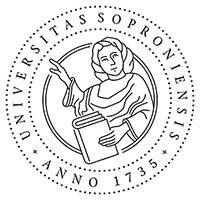Using Short Stories in English Language Teaching at Upper-Intermediate Level
Abstract
This study examines a group of Turkish University students’ responses to some short stories in English. The group consisted of nine participants-nine sophomores studying at Muğla Unversity in Turkey. The participants took upper-intermediate English, and this study was carried out during their upper intermediate classes. For the first week the participants were given a text and they discussed it with their teacher but for the second and the third week they read the stories with another teacher and at the end of a three week short story reading period, they were asked to fill in a questionnaire and they were interviewed. The interviews and the questionnaire indicated that the students had positive attitudes to short story reading and they stated that short story reading contributed to their reading comprehension. They also found short story reading very useful for the fact that it enhanced their reading; the texts did not bore them as they were not too long and they also formed a cultural understanding.
Literaturhinweise
Arıoğul, S. (2001): The Teaching of Reading Through Short Stories in Advanced Classes.Unpublished M.A Thesis. Ankara: Hacettepe University, 2001.
Carter, R., – Long, M.N. (1991): Teaching literature. Harlow: Longman, 1991.
Collie, J. – S. Slater. (1990): Literature in the Language Classroom: A Resource Book of Ideas and Activities. Cambridge: CUP, 1990.
Cooper, M. (1984): Linguistic competence of practice and unpracticed Non-native readers of English. In: J. C. Alderson – A. H. Urquhart (eds.), Reading in a foreign language. New York: Longman, 1984. 122–135. p.
Demirtürk, L. (1987): Approaches to the short story. Ankara: Usem Publications, 1987.
Erkaya, O. R., (2005): Benefits of using short stories in the efl context. Asian EFL Journal. 2005. vol.8. november.
Harmer, J. (2001): The practice of English language teaching. China: Pearson, 2001. 296 p.
Hill, J. (1994): Using literature in language teaching. London: Macmillan. 1994. 119 p.
Hişmanoğlu, M. (2005): Teaching English through literature. Journal of Language and Linguistic Studies. 2005. vol 1, no 1,. 53–65. p.
Lazar, Gillian. (1994): Using literature at lower levels. ELT Journal. 1994. vol. 48, no. 2, 115–119. p. doi: https://doi.org/10.1093/elt/48.2.115
Long, M. – Allen, W. – Cyr, A. (1980): Reading English for academic study. Rowley, Mass: Newbury House.
Oster, J. (1989): Seeing with different eyes: Another view of literature in the ESL class. TESOL Quarterly. 1989. vol. 23, no. 1, 85–103. p. doi: https://doi.org/10.2307/3587509
Parkinson, B., – Thomas H. R. (2000): Teaching literature in a second language. Edinburgh: Edinburgh University Press, 2000. 205 p.
Povey, J.F. (1967): Literature in TESOL programs: The language and the culture. TESOL Quarterly. 1967. vol. 1, no. 2, 40–46. p. doi: https://doi.org/10.2307/3585752
Savvidou, C. (2004): An Integrated Approach to the Teaching of Literature in the EFL Classroom. The Internet TESL Journal. vol. 10, no. 12. Retrieved October, 2011, from http://iteslj.org/Techniques/Savvidou_Literature.html.
Thornley, G. – Roberts G. (1984): An outline of English literature. Harlow: Longman, 1984. 219 p.
Widdowson, H. G. (1984). Stylistics and the teaching of literature. Burnt Mill, Harlow: Longman, 1984. 128 p.
Downloads
Veröffentlicht
Ausgabe
Rubrik
Lizenz
Copyright (c) 2013 Dikici İsmail Zeki

Dieses Werk steht unter der Lizenz Creative Commons Namensnennung - Nicht-kommerziell - Keine Bearbeitungen 4.0 International.







